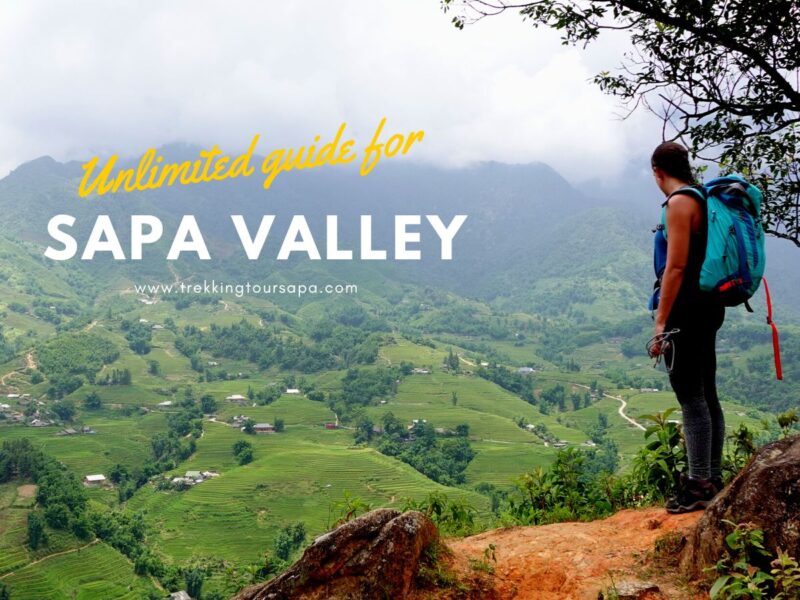The name Sapa is always at the top of the must-visit places when traveling to Vietnam. So what attracts tourists to Sapa? What is the best time to visit Sapa valley? This article will provide complete information about the year’s seasons in Sapa and each season’s special features.
Table of Contents
ToggleIntroduction to Sapa valley
Sapa is a highland town in Lao Cai province, located in the northwest of Vietnam. Sapa town is located about 1.500m to 1.800m from sea level. The residents here are mainly Kinh people and ethnic minorities such as H’Mong, Dao, Tay, Giay, and Xa Pho.
Due to its location in the highland, Sa pa is known as the “town in the clouds” because you can easily see the clouds drifting along the mountainside or the dense white sea of clouds in the valleys in the early morning. In Sapa, there are many mountain ranges, of which the most prominent is the Hoang Lien Son mountain range with the famous Fansipan peak.
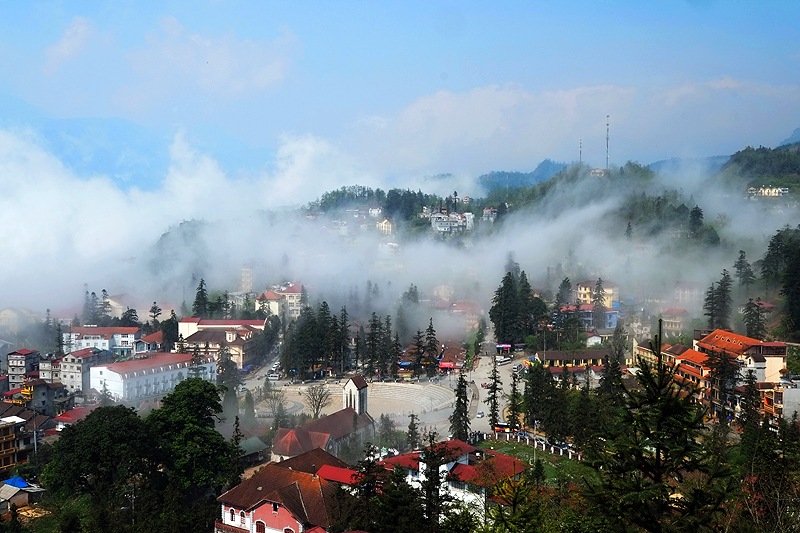
Source: internet
Like Da Lat city in the south of Vietnam, Sapa was once chosen by the French as a resort tourism place in the 40s of the last century. This place still retains ancient churches and French villas that have survived the passage of time.
SaPa weather
Sapa is a beautiful Vietnam region known for its lush green mountains and rice fields. However, the weather can be unpredictable, with sudden changes in temperature and rainfall.
Why does Sapa attract tourists?
Natural scenery
First of all, the majestic natural scenery of Sapa must be mentioned. Because the terrain is located at the bottom of the Hoang Lien Son range, this place attracts tourists through the overlapping mountain ranges mixed with deep shallow valleys, green forests, and ripe golden terraced fields. All combined to make this beautiful land appear as a landscape painting with an extremely harmonious layout.
Sapa is covered with clouds and fog all year, so the natural scenery is hidden and revealed, as beautiful as the images in fairy tales.
In the spring, pink peach blossoms and white plum blossoms compete to bloom throughout the villages, valleys, and mountain slopes, making the natural picture here even more attractive.
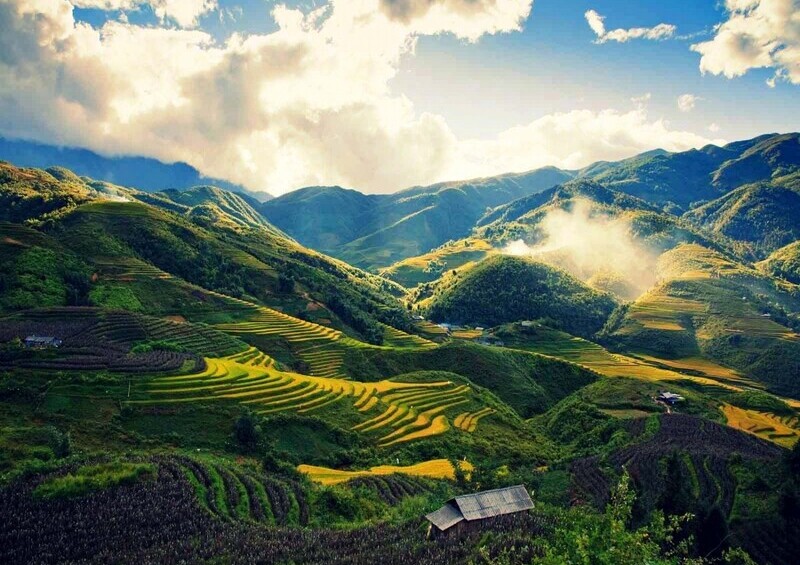
Source: internet
Cool climate all year
Sa Pa has the nuances of a temperate zone with an average year-round temperature ranging from 15-18 °C. Here is a rare place where there are four seasons: spring, autumn, summer, autumn, and winter instead of just two seasons: rainy and sunny like most areas in Vietnam. Therefore, this is considered an ideal place to avoid heat for tourists when the hot season lasts 6 months in all parts of the country.
Cultural identity
Ethnic minorities in Sapa still retain many unique features in their lifestyle and daily activities. Every ethnic group has different costumes, customs, farming methods, etc., with their own distinct cultural identities.
Festivals of ethnic groups in Sa Pa are extraordinary and bold with many ancient religious elements. Many festivals take place annually, but most festivals are in the spring months and mainly within a village or a small area.
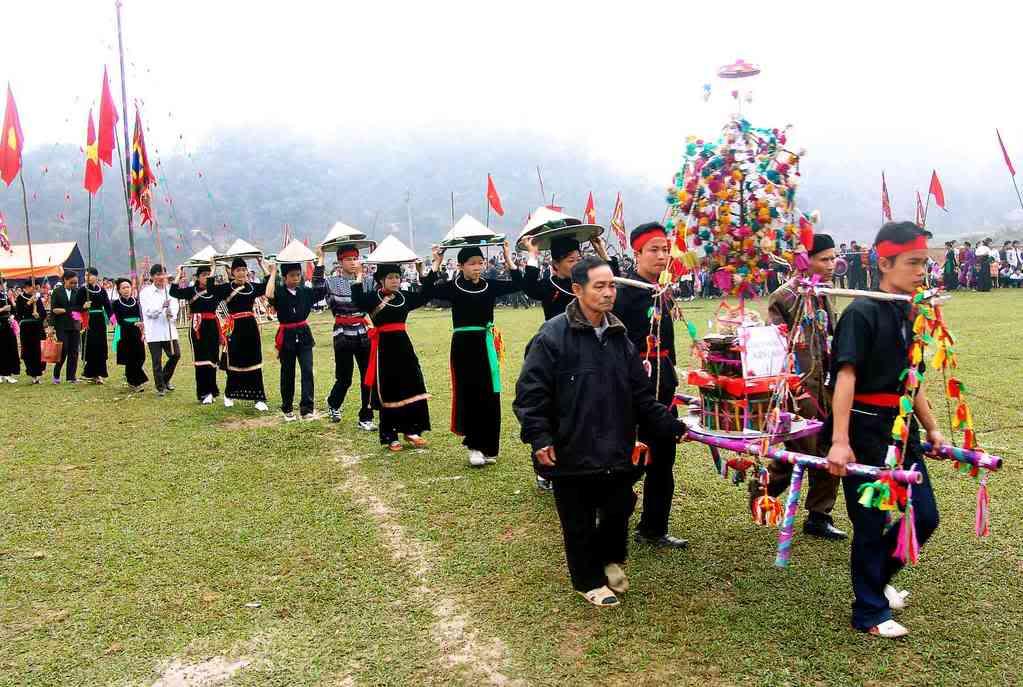
Source: internet
The cultural identity of the ethnic groups in Sa Pa is also reflected in several typical handicrafts such as the Xa Pho people who weave cloth, embroider clothes, and knit; the Dao people embroider brocade patterns, brew wine, and make paper; the Tay profession of making blankets; the H’Mong profession of forging, etc.
The image of the interference between cultures of different ethnic groups in Sapa makes this place a leading destination to discover Vietnamese culture for international friends.
What is the best time to visit the valley of Sa Pa?
Every season of the year, Sapa puts on its unique beauty, so it is impossible to compare which season is more prominent than the one that you can go to Sapa at any time of the year.
From February to March
This is springtime with flowers blooming all over Sapa, especially plum flowers and peach flowers creating a dreamy photo frame that can’t be found anywhere else.
Spring is the season of specific traditional festivals of the ethnic minorities here. The festival is an opportunity for girls and boys to put on colorful traditional costumes with sophisticated motifs. When traveling to Sapa, do not hesitate to immerse yourself in the dances and parties of the local people to have a memorable experience.
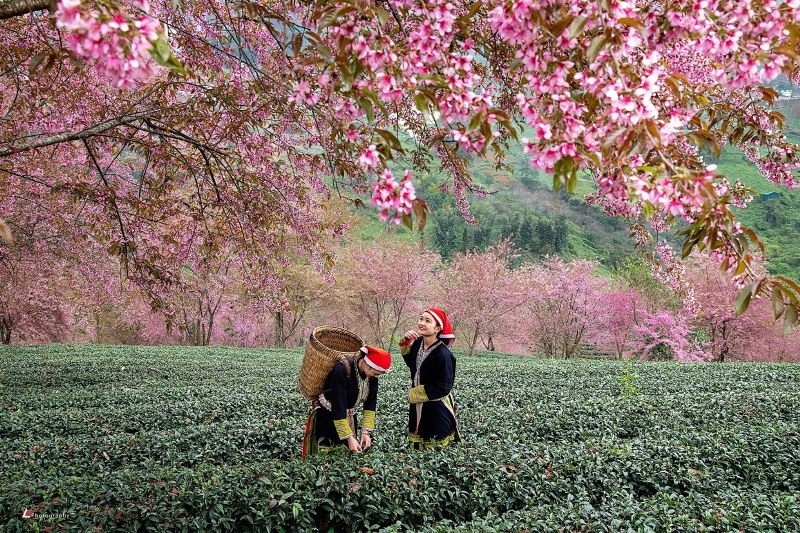
Source: internet
From April to May
If you choose to travel to Sapa in May, this is the rice transplanting season, also known as the pouring water season. At this time, all the terraced fields will be filled with the green color of young rice. Coming here at dawn or dusk, you will be admiring the scene of the sun reflecting sparklingly on the rice fields.
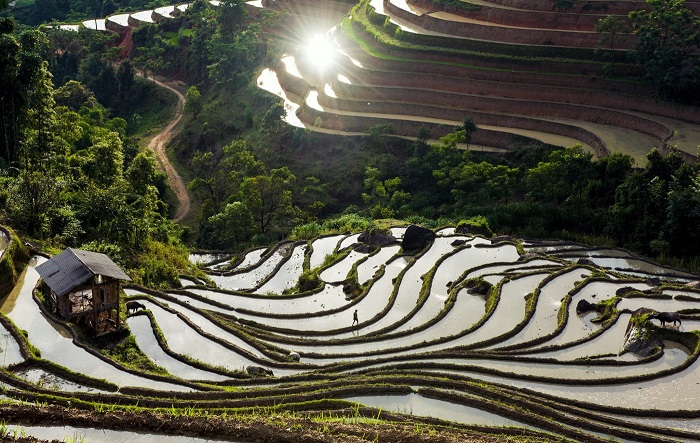
Source: internet
From June to August
This is the summertime in Sapa, the tourists from all over come here in this season to avoid the heat and see the terraced fields stretching and green.
But also note that this is the rainy season, so sometimes there will be floods caused by heavy rain. However, the experience of watching the summer rain in Sapa is an interesting thing. Imagine, there is nothing better than lounging in a small room overlooking the valley and watching the rain fall.
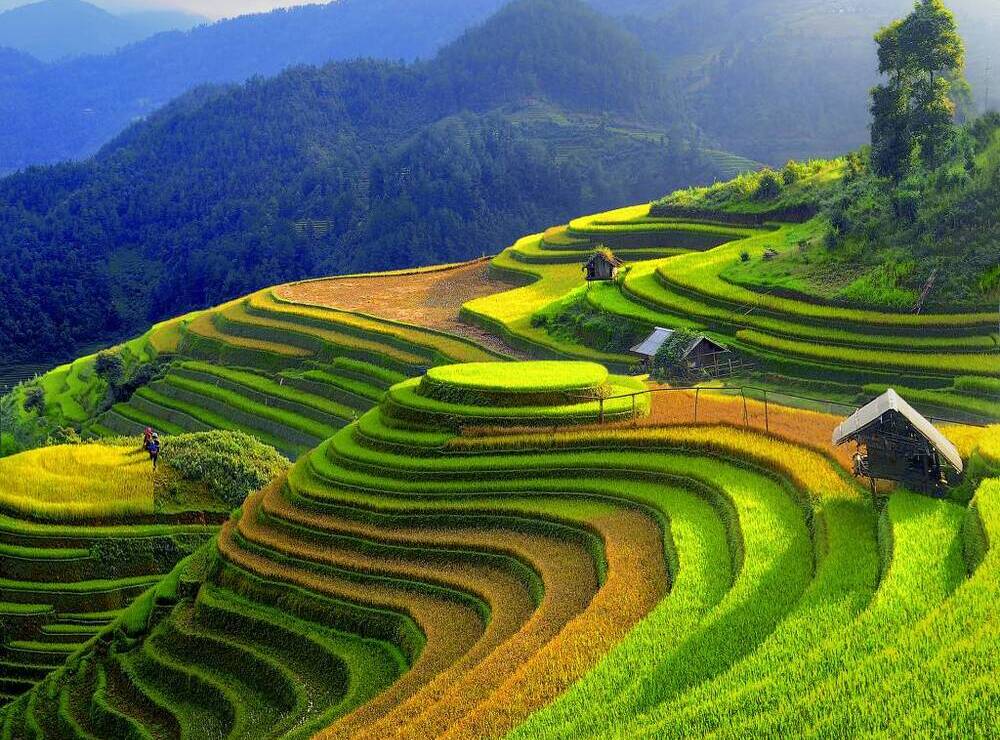
Source: internet
September to November
Traveling to Sapa from September to October is a great choice for those who love the scenery of the harvest season. At this time, the rice is ripe and turning yellow covering the whole valley of Sapa. Autumn Sapa appears attractive in the golden color mixed with the cold weather, nothing can describe the poetry here.
Late autumn is the time to admire buckwheat flowers in full bloom, dyeing pink in the whole Northwest mountains. The buckwheat flower festival is held annually in late autumn, bringing unique cultural experiences that attract tourists to Sapa.
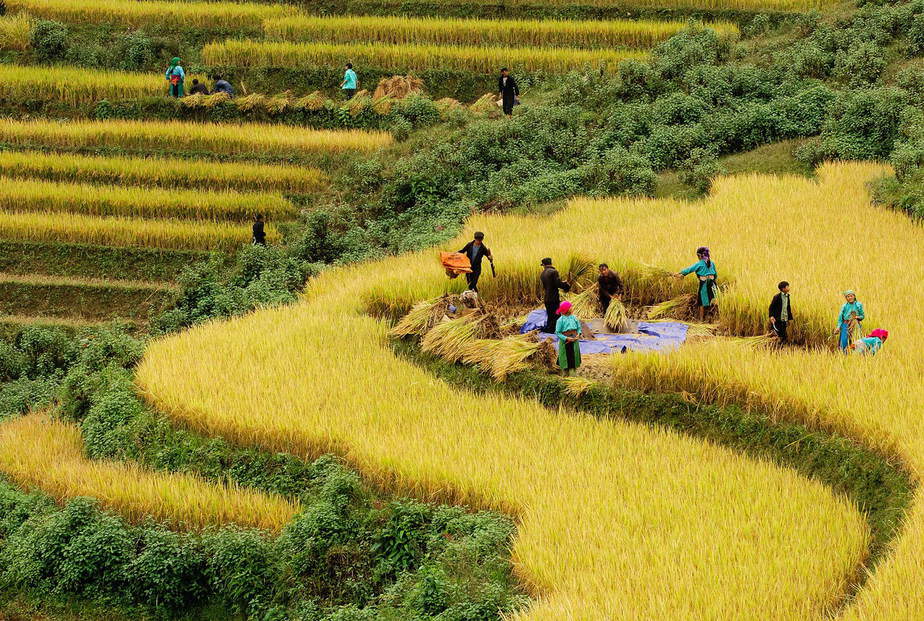
Source: internet
From December to January
This is the coldest time in winter at Sapa, the temperature can drop as low as 0-2 C. In particular, Sapa is one of the rare places where it snows in Vietnam. If you want to touch the snowflakes once, traveling to Sapa in the winter is the ideal choice. However, it doesn’t snow here every year, so if you are lucky, you can hunt for the first snowflakes of the season in Sapa.
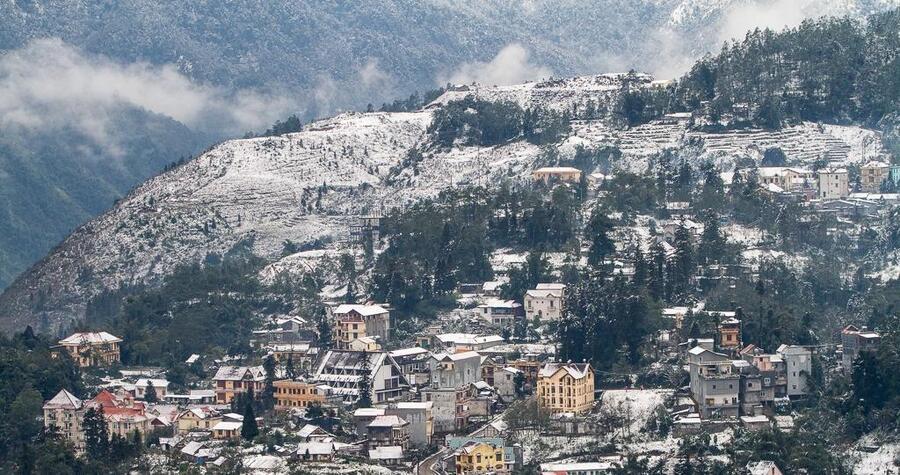
Source: internet
Famous valleys in Sapa
In Sapa, you can easily see many large and small valleys everywhere due to the mountainous terrain here, but the most beautiful and famous is Muong Hoa valley.
Referring to Muong Hoa valley, the most prominent feature of this place is the terraced fields stretching and winding. Having to see them with your own eyes, you can understand why people voted Sapa’s terraced fields as one of the most beautiful terraced fields in the world.
Sapa 1 Day Tours
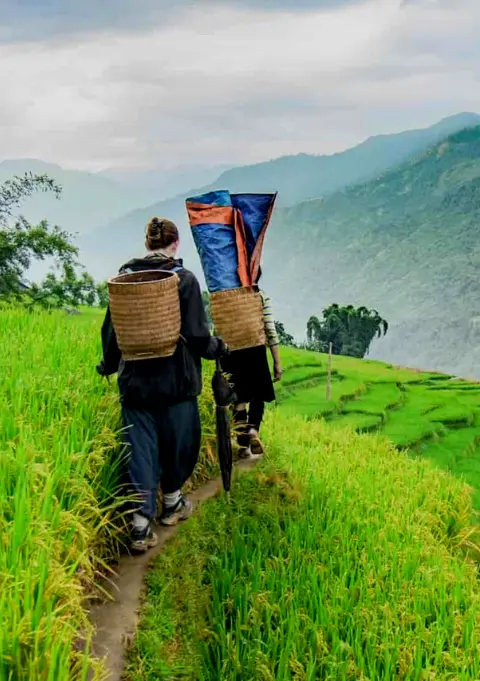
- 1 day experience
- Moderate to challenging
- Cultural immersion & active adventure
- Rice fields, valleys & villages
- Private tours
- Vegan-friendly
Sapa 2 Day Tours
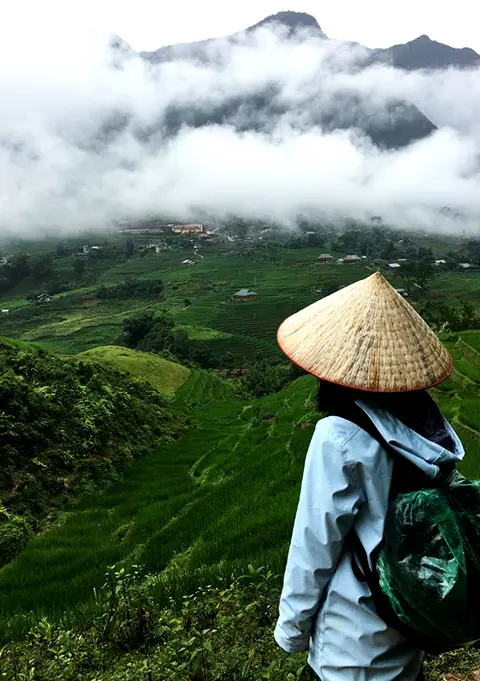
- 2 days 1 night experience
- Moderate to challenging
- Cultural immersion & active adventure
- Mountains, valleys, rice fields and villages
- Private tours
- Vegan-friendly
Sapa 3 Day Tours
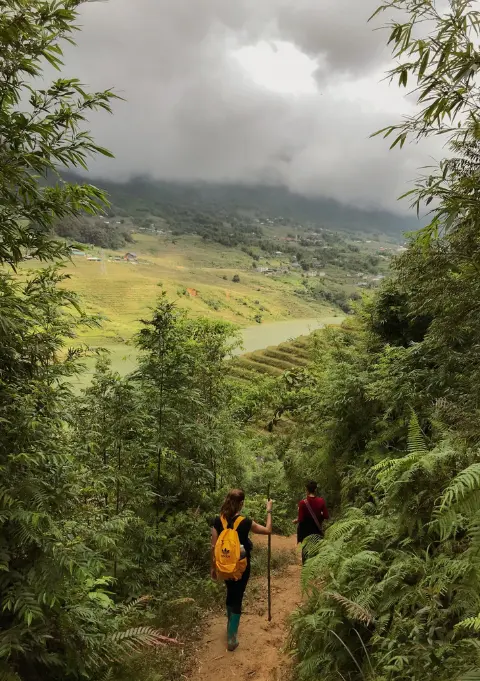
- 3 days 2 night experience
- Moderate to challenging
- Cultural immersion & active adventure
- Mountains, valley, rice fields & villages
- Private tours
- Vegan-friendly
Sapa 4 Day Tours
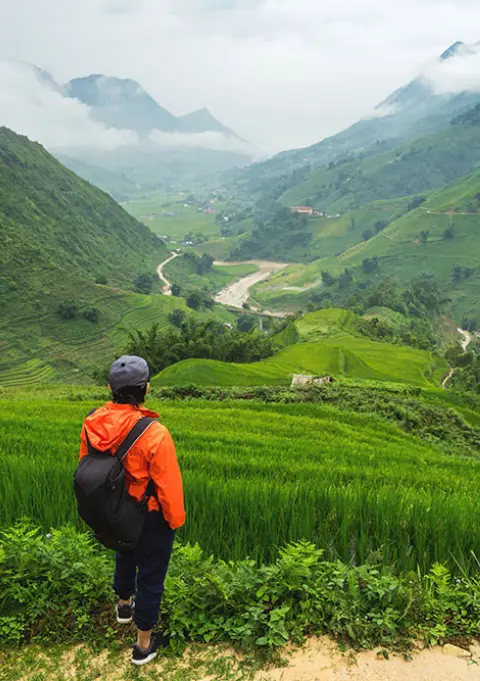
- 4 days 3 night experience
- Moderate to challenging
- Cultural immersion & active adventure
- Mountains, valleys, rice fields & villages
- Private tours – Less Touristic
- Vegan-friendly
About Muong Hoa Valley
The Muong Hoa Valley in Sapa, Vietnam is one of the world’s most beautiful and tranquil places. Surrounded by majestic mountains and verdant rice fields, the valley of Sapa is a paradise for nature lovers, photographers, trekkers, and foodies alike.
A Photographer’s Paradise with the amazing rice-terraced fields in the valley
The Muong Hoa Valley in Sapa, Vietnam is truly a photographer’s paradise. Nestled between the stunning mountains of Sapa, the valley is filled with emerald-green rice terraces stretching miles along the valley floor.
Photographers can capture breathtaking shots of these vast and intricate terraces and the traditional villages that dot the landscape. Whether you’re a professional photographer or an amateur, the valley of Sapa is sure to provide plenty of opportunities for amazing shots.
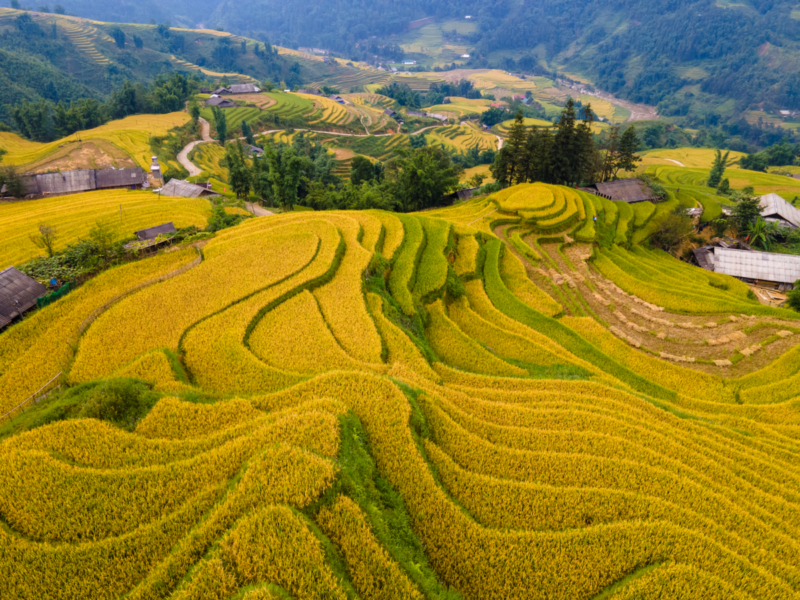
Adventurers Welcome with Trekking Trails
The Valley in Sapa, Vietnam also offers plenty of adventure for trekkers. With many trails winding their way through the valley and into the mountains, the valley of Sapa is perfect for trekking.
The trails range from easy to difficult, so there’s something for everyone. Whether you’re looking for a leisurely stroll or a more challenging excursion, Sapa has it all.
Taste of Vietnamese Cuisine
The Muong Hoa is also home to some of the country’s most delicious and traditional cuisine.
Plenty of local restaurants serve dishes like Sapa-style fried rice and Sapa noodles, as well as many other Vietnamese favorites. If you’re looking for a truly authentic culinary experience, the valley of Sapa is definitely the place to go.
The Muong Hoa in Sapa, Vietnam, is an incredible destination with something for everyone. From breathtaking scenery to delicious cuisine, Valley will surely provide you with an unforgettable experience.
Whether you’re looking to explore nature or take pictures, Sapa has it all! So come and explore one of Sapa’s most beautiful locations!
A Trekker’s Delight
The Sapa in Vietnam is a haven for trekkers and adventure-seekers of all kinds. With its towering mountains, lush landscapes, and endless views, Sapa is truly an outdoor enthusiast’s dream. From breathtaking hikes to unforgettable experiences, Sapa has something to offer everyone.
The Muong Hoa is a popular trekking spot for travelers in Sapa. Not only does the valley offer breathtaking views, but it also provides visitors with an up-close look at traditional villages and rice fields.
A Foodie’s Haven
The Sapa in Vietnam is a paradise for foodies and culinary adventurers alike. With its wide variety of Vietnamese cuisine, Sapa offers something for everyone. From traditional Sapa noodles to Sapa-style fried rice, Sapa is the perfect place to sample local delicacies.
For those looking to explore the flavors of Sapa, there are plenty of restaurants to choose from. Many of these eateries offer dishes influenced by the mountainous region and its unique culture, such as Cat Da or Com Lam—rice cooked in bamboo with charcoal fire. The Sapa market also offers a variety of street snacks like Banh Cuon – steamed rice rolls filled with pork or mushrooms.
A Nature Lover’s Dream
The Sapa in Vietnam is a nature lover’s dream. With its towering mountains, deep valleys, and stunning rice terraces, Sapa is home to some of the most majestic natural scenery in all of Vietnam. From hiking trails to riverside views, Sapa has something for everyone.
The best route for hiking in Valley of Sapa
The valley in Sapa, Vietnam, is a haven for hikers and outdoor adventurers of all kinds. The Y Linh Ho, Lao Chai, Ta Van, and Giang Ta Chai routes provide breathtaking scenery, challenging trails, and unforgettable experiences.
Adventurers will begin the trek through The valley in Sapa’s majestic mountains and terraced rice fields, starting at Y Linh Ho village. Trekkers will follow the Lao Chai river to Ta Van before heading towards Giang Ta Chai. The last leg of the route is a climb up to Sapa Town, where adventurers can take stunning views of Sapa.
The valley in Sapa in Vietnam is an incredible destination for adventure seekers and nature lovers. With its stunning scenery, diverse culture, and delicious cuisine, Sapa has something for everyone. So explore Sapa—the perfect place to create unforgettable memories!
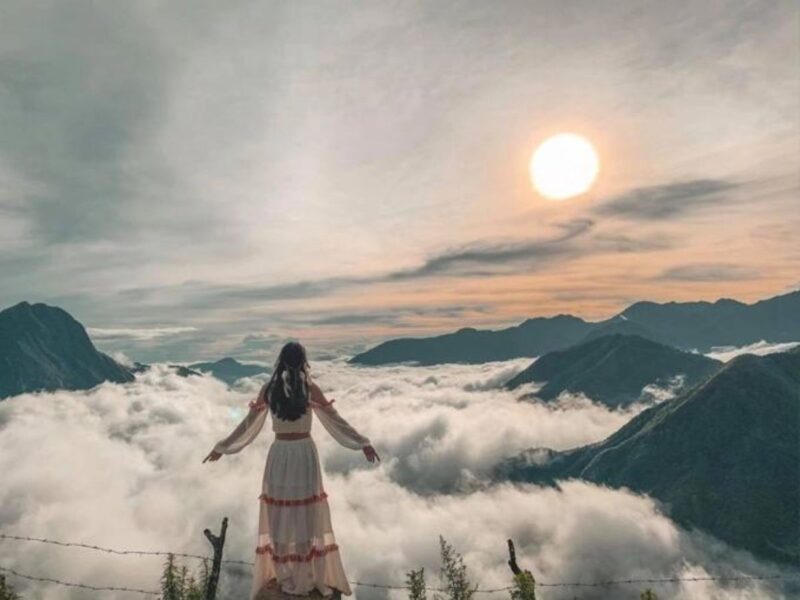
What you need to know before hiking in The valley in Sapa
Before embarking on a hike through the valley in Sapa, there are a few things you’ll need to know. First and foremost, be sure to pack appropriately for the weather and bring plenty of water and snacks. It’s also important to be aware of the different trails in the area, as some can be quite challenging.
In addition, it’s essential to be familiar with the local culture and customs before hiking in the valley in Sapa. Remember that you are visiting a rural community, so be respectful of the people and their way of life. Lastly, always stay safe while hiking and take precautions against potential dangers.
With these tips, you’re ready to explore the valley in Sapa’s beautiful trails!
How to prepare for a hike in the valley in Sapa
Preparing for a hike in the valley in Sapa requires careful planning and preparation, as the terrain and environment can be quite challenging. To ensure a safe and enjoyable trek, hikers should consider the following:
Pack Appropriately: It’s important to wear sturdy shoes or hiking boots with good grip and comfortable clothing that won’t restrict movement. Additionally, bring extra clothing layers in case of sudden weather changes. Also, bring plenty of water and snacks to stay hydrated and energized during your hike.
Learn About the Area: Before setting out on your trek, it’s important to familiarize yourself with the valley in Sapa’s terrain and any potential hazards. Research local trails and routes beforehand to ensure you are taking the safest route possible. Additionally, take note of landmarks along your journey so you can find your way back if needed – always stick to marked paths when possible!
Research Local Culture & Customs: the valley in Sapa is home to several ethnic minority groups who have unique customs and beliefs that must be respected when visiting the area. Be sure to research local cultural practices ahead of time so you can respectfully engage with the locals during your trek.
Follow Safety Protocols: When hiking in the valley in Sapa, remember to take basic precautions such as informing someone of where you are going before you begin your trek. Additionally, never enter caves or abandoned buildings; these areas can be dangerous due to unknown conditions. Finally, always be aware of wildlife in Sapa—the region is home to a variety of animals such as bears and wild boars that could become aggressive if disturbed!
Following these tips will prepare hikers for a safe and enjoyable experience when trekking through the valley in Sapa in Vietnam. With its stunning scenery, incredible culture, and delicious cuisine, Sapa offers an unforgettable experience for all kinds of outdoor adventurers!
Hiking tips for the valley in Sapa
Hiking the valley in Sapa in Vietnam is an amazing experience full of breathtaking views and enchanting culture. However, it’s important to be aware of potential hazards and take the necessary precautions before heading out on the trails. To make sure your Sapa hiking adventure is enjoyable and safe, here are some tips to keep in mind:
Pack Appropriately: Be sure to wear shoes or boots with good grip and comfortable clothing that won’t restrict movement. Additionally, bring extra clothing layers for sudden weather changes as the valley in Sapa has unpredictable weather. It’s also essential to bring plenty of water and snacks to stay hydrated and energized during your hike.
Research Trails & Hazards: Before setting out on your trek, it’s important to familiarize yourself with the valley in Sapa’s terrain and any potential hazards along the way. Research local trails beforehand so you can get a sense of their difficulty levels and choose the safest route possible. Additionally, take note of landmarks along your journey so you can find your way back if needed – always stick to marked paths when possible!
Respect Local Culture & Customs: the valley in Sapa is home to several ethnic minority groups who have unique customs and beliefs that must be respected when visiting the area. Take time to read up on local customs prior to your trip so you can respectfully engage with locals while trekking through Sapa.
Follow Safety Protocols: When hiking the valley in Sapa, it’s wise to follow basic safety protocols such as informing someone of where you are going before you start trekking. Avoid entering caves or abandoned buildings as these areas can contain dangerous conditions caused by unknown factors such as collapse or animals inhabiting them. Also be aware of wildlife in Sapa — the region is home to a variety of animals such as bears, wild boars and snakes that could become aggressive if disturbed!
By following these tips, hikers will be able to ensure a safe, fun-filled experience when exploring the valley in Sapa’s stunning beauty! Whether you’re looking for adventure or relaxation, Sapa offers something for everyone—so grab your pack and get ready for an unforgettable journey!
Sapa 1 Day Tours

- 1 day experience
- Moderate to challenging
- Cultural immersion & active adventure
- Rice fields, valleys & villages
- Private tours
- Vegan-friendly
Sapa 2 Day Tours

- 2 days 1 night experience
- Moderate to challenging
- Cultural immersion & active adventure
- Mountains, valleys, rice fields and villages
- Private tours
- Vegan-friendly
Sapa 3 Day Tours

- 3 days 2 night experience
- Moderate to challenging
- Cultural immersion & active adventure
- Mountains, valley, rice fields & villages
- Private tours
- Vegan-friendly
Sapa 4 Day Tours

- 4 days 3 night experience
- Moderate to challenging
- Cultural immersion & active adventure
- Mountains, valleys, rice fields & villages
- Private tours – Less Touristic
- Vegan-friendly
Top 8 must-visit places when traveling to the Sapa Valley trail
Fansipan Peak
It would be a mistake to travel to Sapa without conquering the Fansipan mountain peak. This is the highest mountain in Vietnam with a height of up to 3.143 m above sea level, and is dubbed the “roof of Indochina”.
Located about 9 km from Sapa town, visitors can choose to move from Sapa town to the foot of Fansipan mountain in many ways such as trekking, taking a taxi, or going by mountain train. For setting foot at the top of Fansipan, the first way is to climb the mountain and the second is to use the cable car.
If you are an adventure lover, conquering the top of Fansipan mountain by road is a wonderful experience you will probably never forget. This is a place that both amateur and professional climbers aspire to conquer.
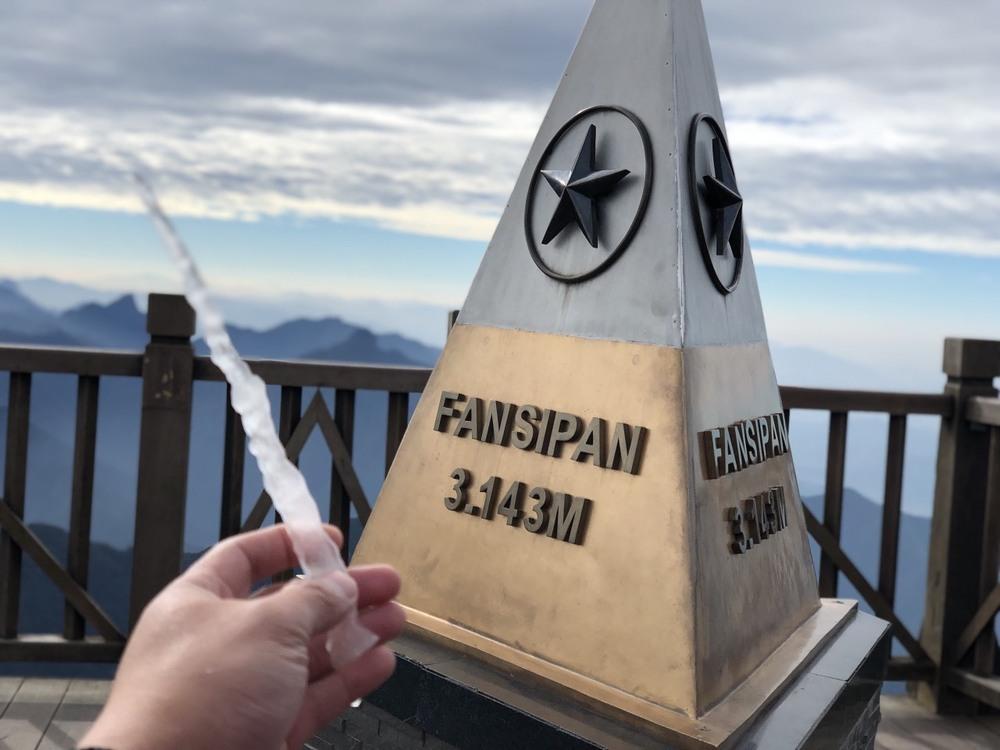
Source: internet
The cable car is the way that most tourists choose to set foot at the top of Fansipan. This type is suitable for all, it only takes about an hour for visitors to conquer Fansipan peak. The cable car system is a great choice for those who have weak health or do not like climbing.
Although visiting Fansipan peak by cable car is increasingly popular, many people still want to conquer the highest mountain in Vietnam on their own feet. However, this activity should only be for those who have endurance, good health, and good climbing skills.
Ham Rong mountain
This is one of the places where you can admire the panoramic view of Sapa town in the mist from above. The lowest point of Ham Rong mountain is 1.450m high, and the highest peak is more than 1.800m. From the top of the hill, you can zoom in to see most of the famous tourist attractions of Sa Pa such as Muong Hoa valley, Ta Van, and Cat Cat village, …
Visitors will be able to see many famous Sapa tourist attractions such as Heaven Gate, Cloud Garden, Ham Rong Flower Garden, and Thach Lam Stone Garden. The space of Ham Rong Mountain is a harmonious combination of natural landscapes and artificial miniatures, making the whole place here both wild and lyrical.
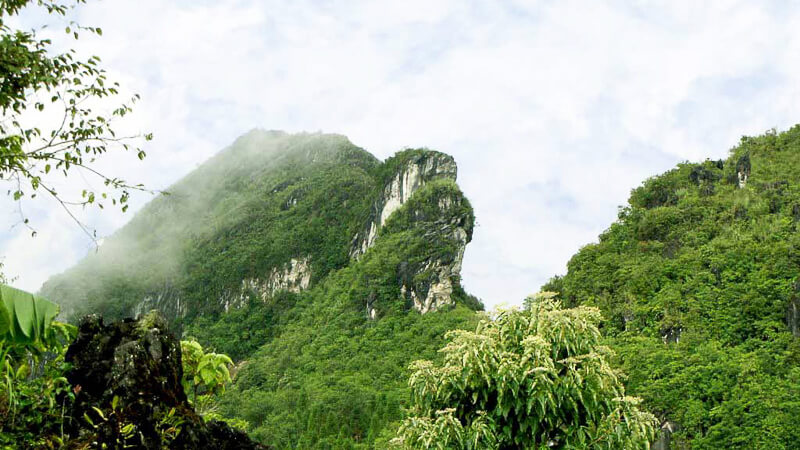
Source: internet
Sapa Stone Church
Located in the heart of town, Sapa Stone Church built in 1895 is considered the most complete ancient architectural mark of the French left. The Stone Church is a highlight that attracts tourists when coming to Sapa town.
This church is located in a prime location with Ham Rong mountain behind, and a large area in front used to organize community cultural activities. Around the four sides of the church, you can observe other architectural works built by the French.
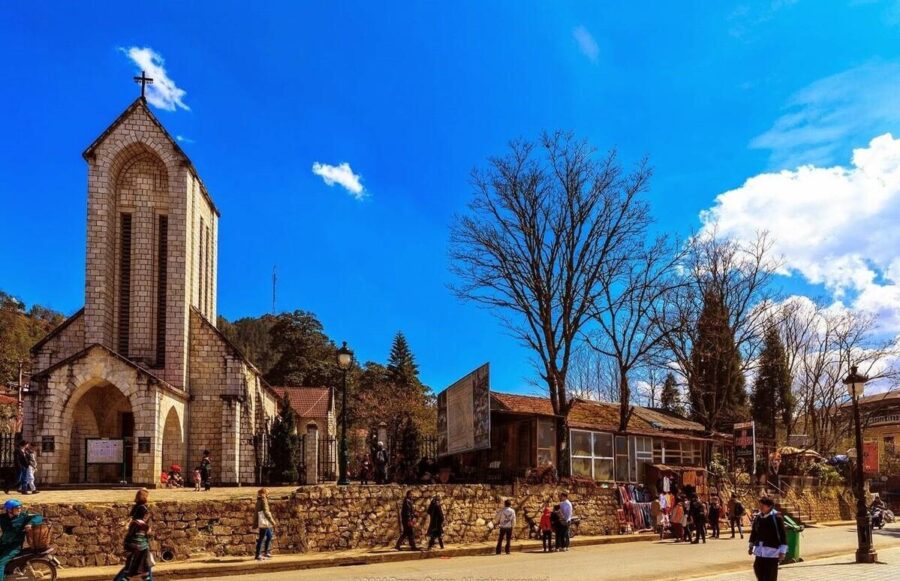
Source: internet
Lao Chai – Ta Van village
Contrary to the bustle of sapa region, Lao Chai-Ta Van is a peaceful and pristine beauty of the mountain areas.
Lao Chai – Ta Van is inhabited by the H’Mong and Dao ethnic groups. These are two large villages in the Sapa area. Coming here, visitors will leave the noise and crowds to come to the space of green terraced fields and simple rustic wooden houses.
Coming to Lao Chai-Ta Van in the spring, you will experience jubilant festivals and folk games such as swinging, and throwing,… which will bring you unforgettable memories of this beautiful land.
Besides, you also have the opportunity to enjoy the extremely interesting music and dance performances, and many exciting activities of the indigenous people when night falls.
The H’mong ethnic group can be found in Sapa Valley, a picturesque region of Vietnam known for its lush green mountains and rice fields. It’s important to stay aware of local customs and culture when visiting Sapa Valley to ensure a respectful experience for all.
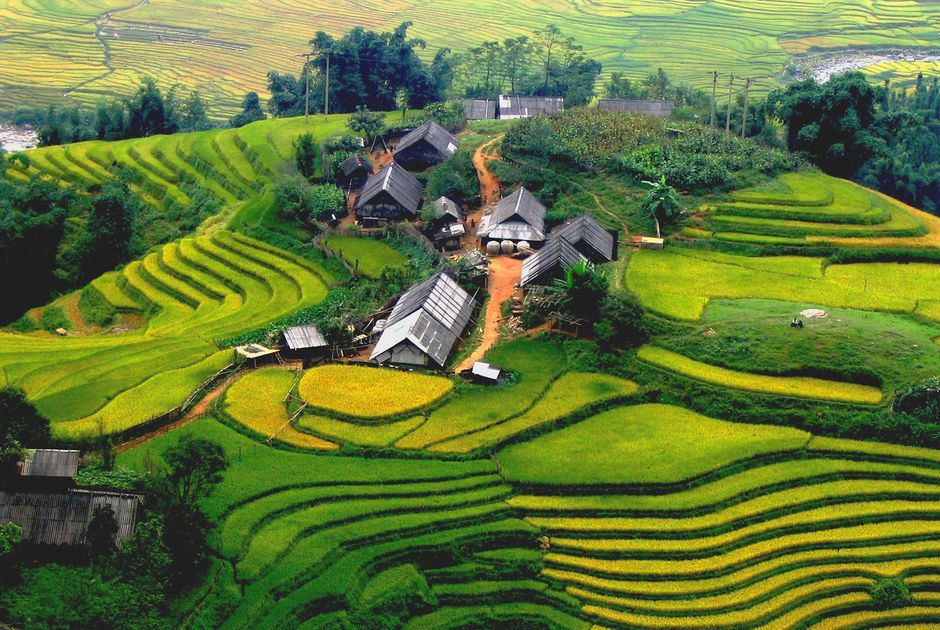
Source: internet
O Quy Ho Pass
With a length of up to 50 km and a height of more than 2000m, the O Quy Ho pass is the longest and most beautiful pass in Sapa as well as in the Northwest mountains. O Quy Ho Pass captivates any adventurer with its craggy curves and sharp corners when one side is deep and the other is cliffs.
With such a height, O Quy Ho pass is covered with clouds all year, this is an extremely famous place to hunt clouds in the hearts of young people. In the late afternoon, stopping on the pass and looking out into the distance, you will see white clouds covering the entire valley below creating a majestic natural scenery.
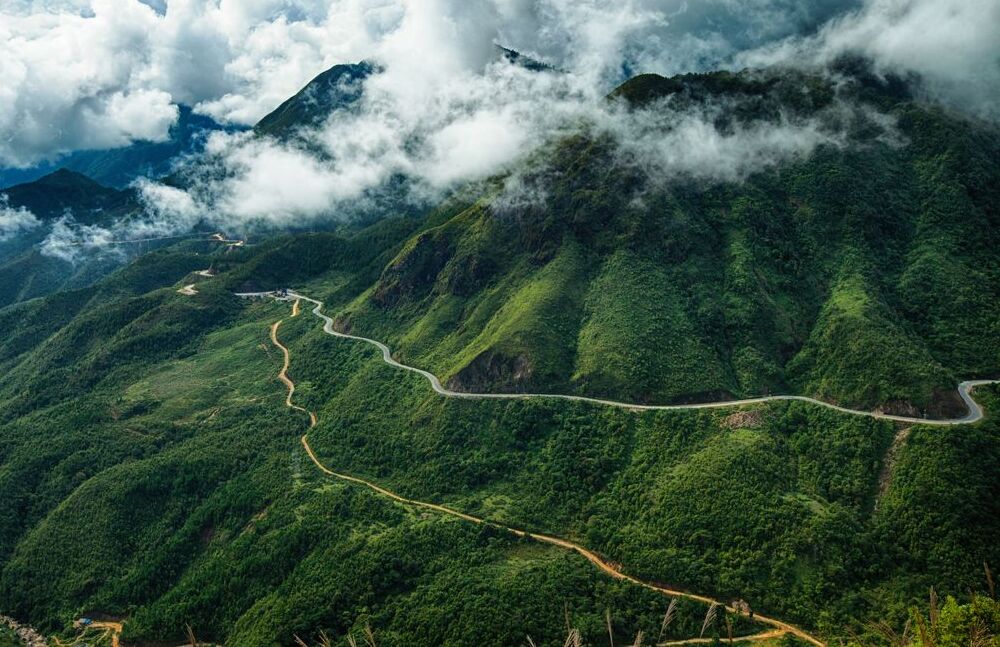
Source: internet
Cat Cat village
Cat Cat village was formed around the middle of the 19th century. In the early 20th century, the French discovered the beautiful beauty of this place and chose it as a resort.
To get to the center of Cat Cat village, you must go through a small paved road just enough for two people to pass each other. Along the two sides of this road are small stalls selling handmade souvenirs by the H’Mong ethnic people, creating an imbued frame with the ethnic identity of the mountain area of Vietnam.
Follow the stony route downhill; once you hear the sound of rushing water, which is the center of the village. It can be said that the village center is the most prominent stop here. Here is the meeting point of three streams: Vang Stream, Bac Stream, and Tien Sa Stream. Besides, giant bamboo watermills, bamboo bridges crossing the waterfall, and the rocks below create a beautiful natural setting.
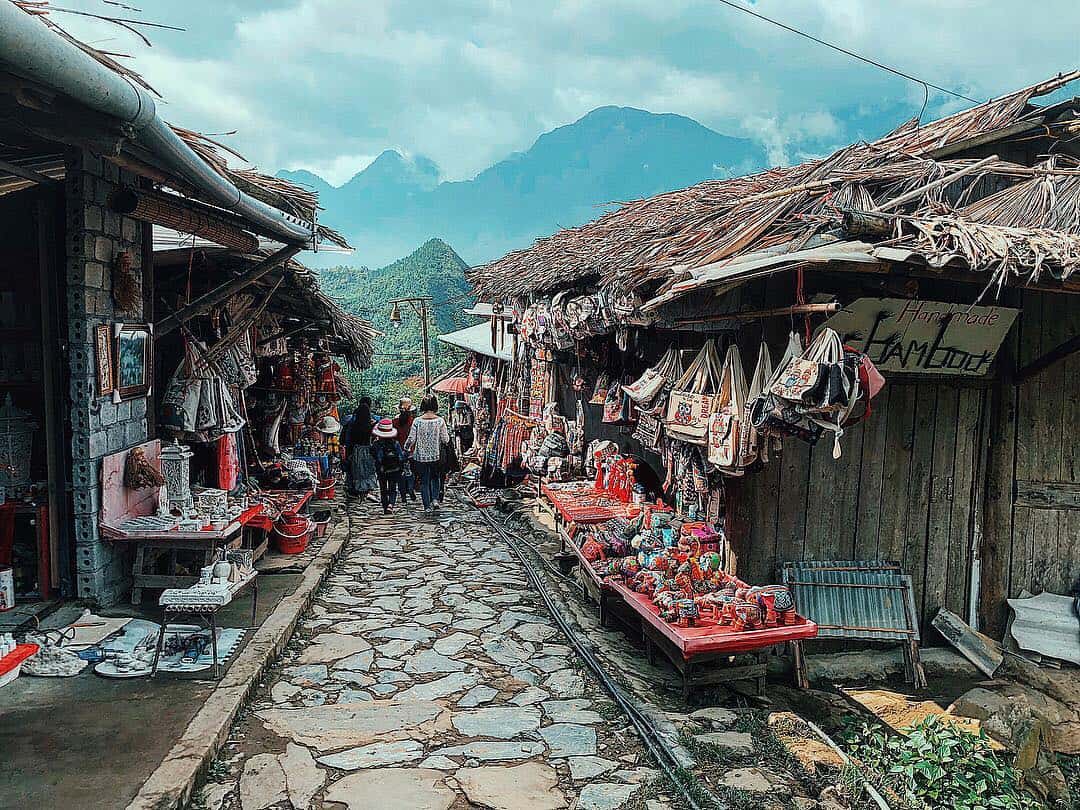
Source: internet
Sapa ancient stone
Traveling to Sapa, you should not miss the opportunity to admire the ancient stone – a masterpiece from the hands of nature.
A rock field about 8 km wide with nearly 200 stone slabs with unique patterns such as stairs, humans, roads, and sharp carved writing, but there are also vague and confusing patterns with many strange lines is seen as a sequel to the life of people in ancient times.
Every year, Sapa ancient stone attracts a large number of tourists to visit and explore because of the mysteries and mysteries that this place brings.
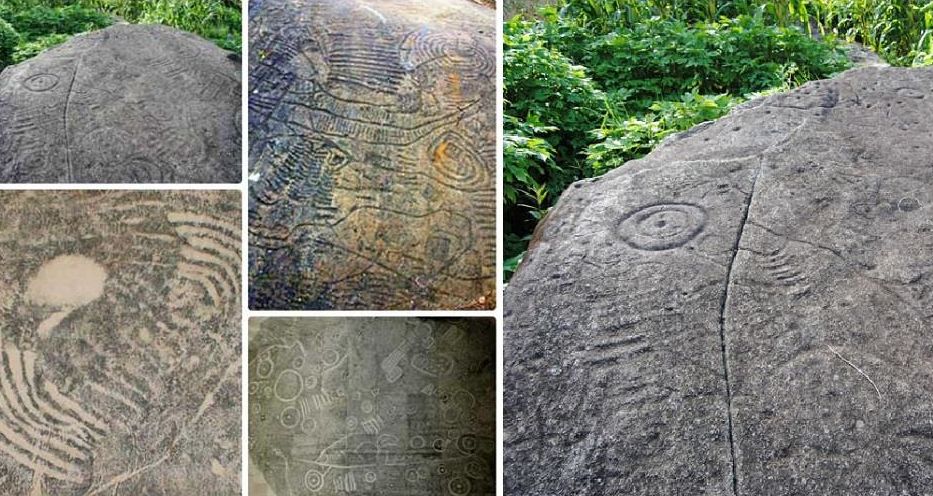
Source: internet
Ta Phin ancient monastery
Ta Phin Ancient Monastery is located about 12 km east of Sapa town. This is a French colonial-style work. Although abandoned for a long time, this place still attracts a large number of tourists because of the blend of classical architectural style and the magic of long-term abandonment.
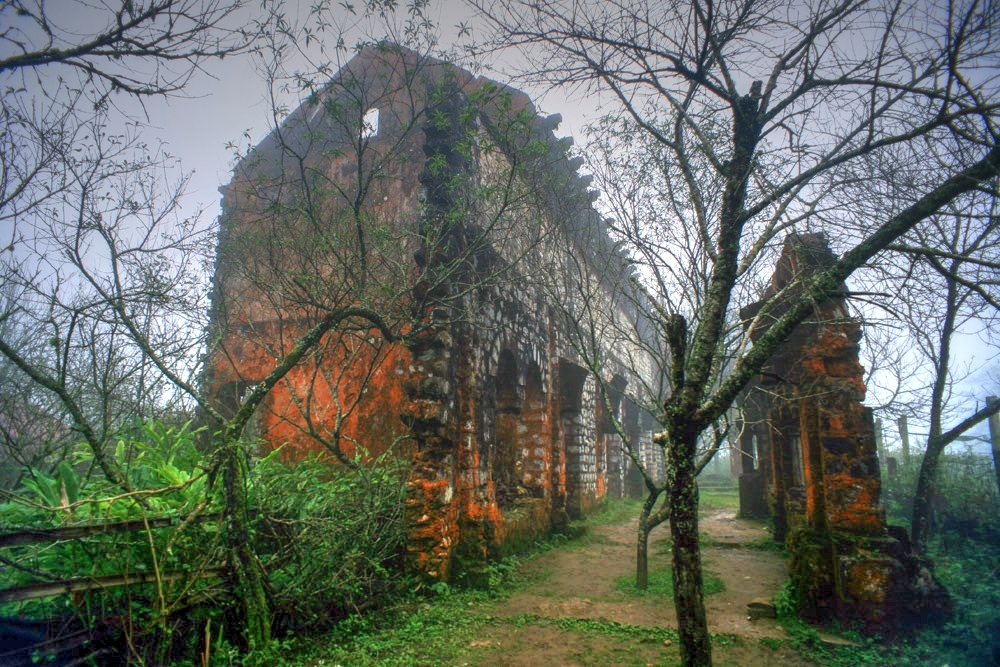
Source: internet
Sapa 1 Day Tours

- 1 day experience
- Moderate to challenging
- Cultural immersion & active adventure
- Rice fields, valleys & villages
- Private tours
- Vegan-friendly
Sapa 2 Day Tours

- 2 days 1 night experience
- Moderate to challenging
- Cultural immersion & active adventure
- Mountains, valleys, rice fields and villages
- Private tours
- Vegan-friendly
Sapa 3 Day Tours

- 3 days 2 night experience
- Moderate to challenging
- Cultural immersion & active adventure
- Mountains, valley, rice fields & villages
- Private tours
- Vegan-friendly
Sapa 4 Day Tours

- 4 days 3 night experience
- Moderate to challenging
- Cultural immersion & active adventure
- Mountains, valleys, rice fields & villages
- Private tours – Less Touristic
- Vegan-friendly
Must-try dishes when visiting the valley in Sapa
Thang Co
This is the most famous dish in the Northwest that many tourists want to experience. Thang Co is usually cooked from meat and organs of buffalo, cow, pig, and horse,… This dish especially needs up to over 10 different spices, including the heirloom spices of the ethnic people here. All these ingredients will be cooked in a large pan and simmered on the stove for many hours to soften and absorb the spices, creating a unique rich flavor, unlike any other food you have tasted before.
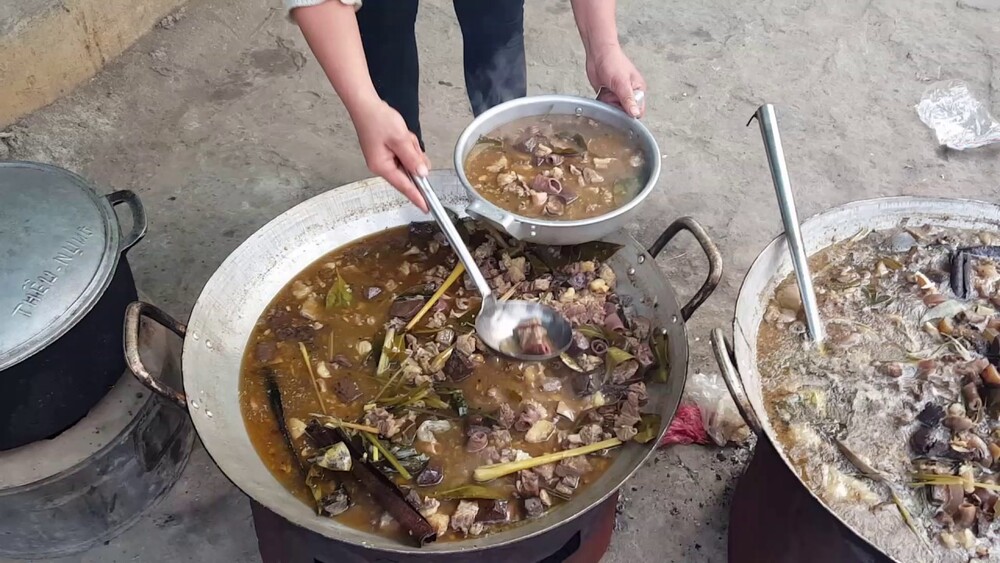
Source: internet
Armpit pig
This is a breed of pig of the H’Mong people, when brought to the market to sell, they often grab it and clip it to the armpit, hence the name. The armpit pig is only 4-5 kg, raised freely, so the meat is firm, soft, and sweet.
The best armpit pig is when grilled on charcoal until the skin is golden and crispy. Turning around by the fire, enjoying this food, and drinking wine is a hobby of the locals that visitors should try once.
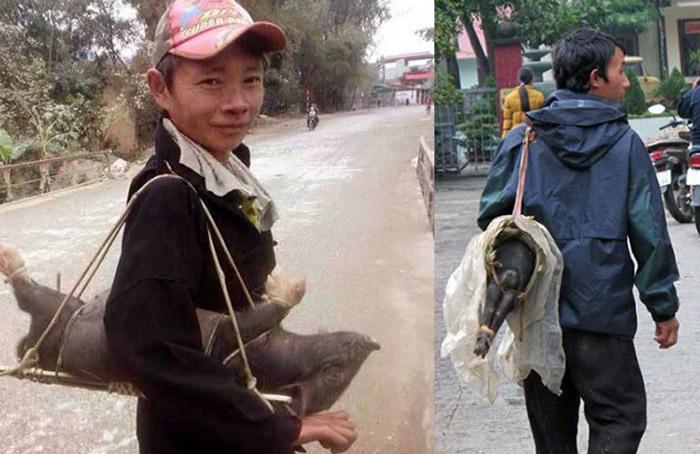
Source: internet
Black chicken
Black chickens are raised by many H’Mong families. The identifying feature of this chicken is its black color from feathers and meat to bones. Black chickens are small in stature, each weighing only about 200g – 300g. This is a famous remedy that is handed down in folklore. It is often used to treat diseases such as anorexia, menstrual disorders, heat in the body, bone pain,… or nutritional supplements for the elderly and the sick.
In Sapa, people like to eat honey-grilled black chicken because its skin is tough, but the meat is soft; it is served with salt, pepper, and lemon, which will bring you a memorable culinary experience in this land of fog.
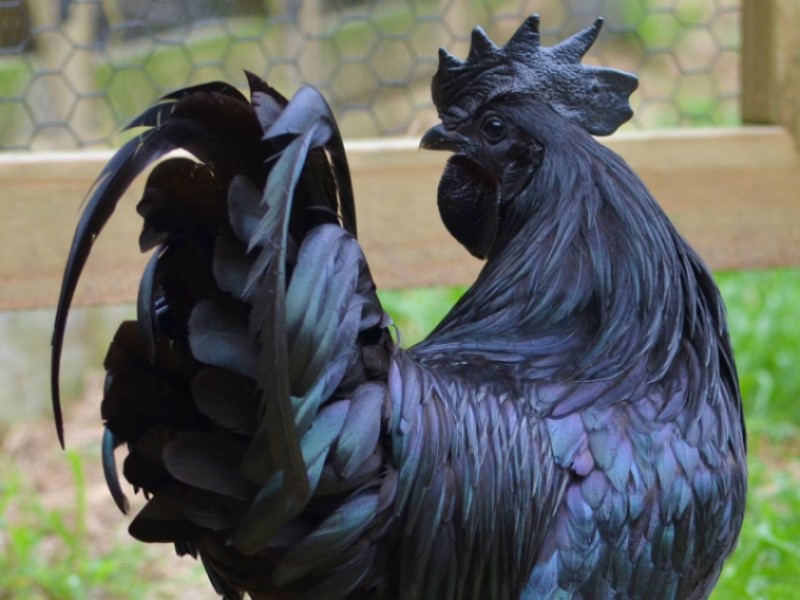
Source: internet
Grilled food
In a cold region like Sapa, grilled food is an indispensable dish. This food is everywhere, which is very suitable for the cold weather here. There are many kinds of grilled goods from skewered pork, chicken, and vegetable rolls to eggs, corn, potatoes, and corn for visitors to choose from.
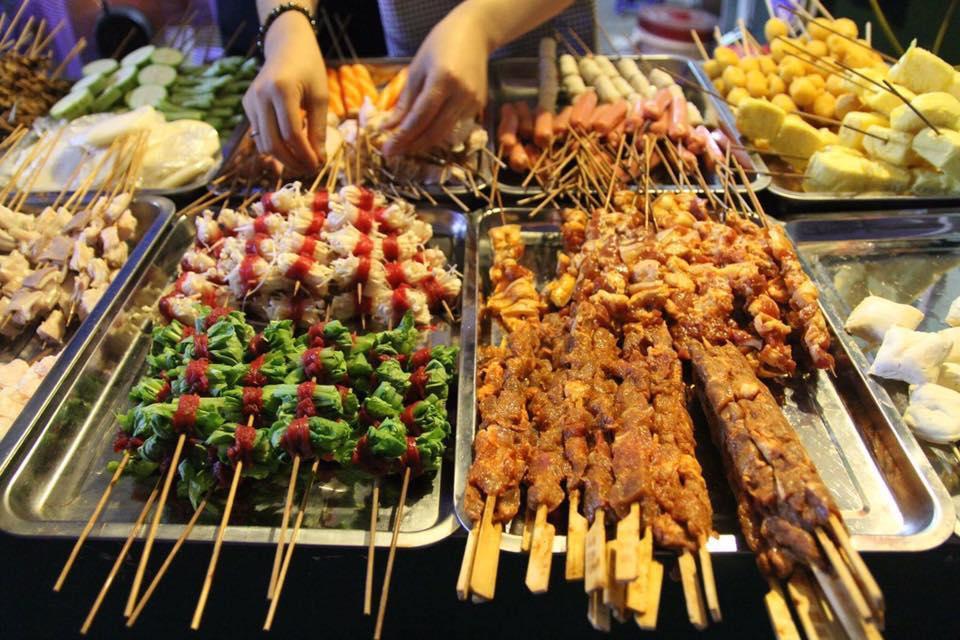
Source: internet
The valley in Sapa trekking tour
The Sapa Valley trail is an interesting activity not to be missed when visiting Sapa is trekking. You don’t have to be a mountain climber or a professional runner to participate in this activity. With good health, you can book an exciting trekking tour for yourself.
If you only travel by motorbike or taxi and stop at famous tourist destinations, this is very difficult for you to connect and interact with the locals on the roads you go through.
To fully feel the natural landscape, indigenous culture, and people here, trekking is a form of transportation worth referring to. You can spend one day of your trip joining a trekking tour along the roads and villages of Sapa. Guaranteed, this will be an unforgettable experience in your travel luggage.
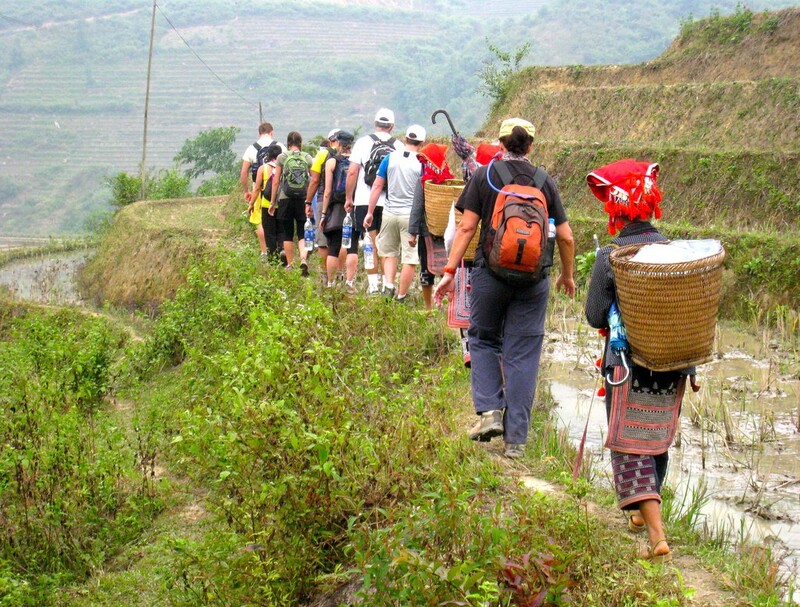
Source: internet
Trekking Tour Sapa offers a variety of trekking packages depending on your experience needs. We will suggest the most suitable option depending on whether you want to choose a private or group tour, how many days you want to spend, and what routes you want to trek through.
The valley in Sapa is always the top destination for Western tourists when visiting Vietnam because of the majestic beauty of the natural landscape and the unique culture of the indigenous people here. With rugged mountainous terrain and rustic, peaceful villages, Sapa becomes a suitable tourist destination for both adventurous travelers and those looking for a quiet vacation.
Sapa 1 Day Tours

- 1 day experience
- Moderate to challenging
- Cultural immersion & active adventure
- Rice fields, valleys & villages
- Private tours
- Vegan-friendly
Sapa 2 Day Tours

- 2 days 1 night experience
- Moderate to challenging
- Cultural immersion & active adventure
- Mountains, valleys, rice fields and villages
- Private tours
- Vegan-friendly
Sapa 3 Day Tours

- 3 days 2 night experience
- Moderate to challenging
- Cultural immersion & active adventure
- Mountains, valley, rice fields & villages
- Private tours
- Vegan-friendly
Sapa 4 Day Tours

- 4 days 3 night experience
- Moderate to challenging
- Cultural immersion & active adventure
- Mountains, valleys, rice fields & villages
- Private tours – Less Touristic
- Vegan-friendly
